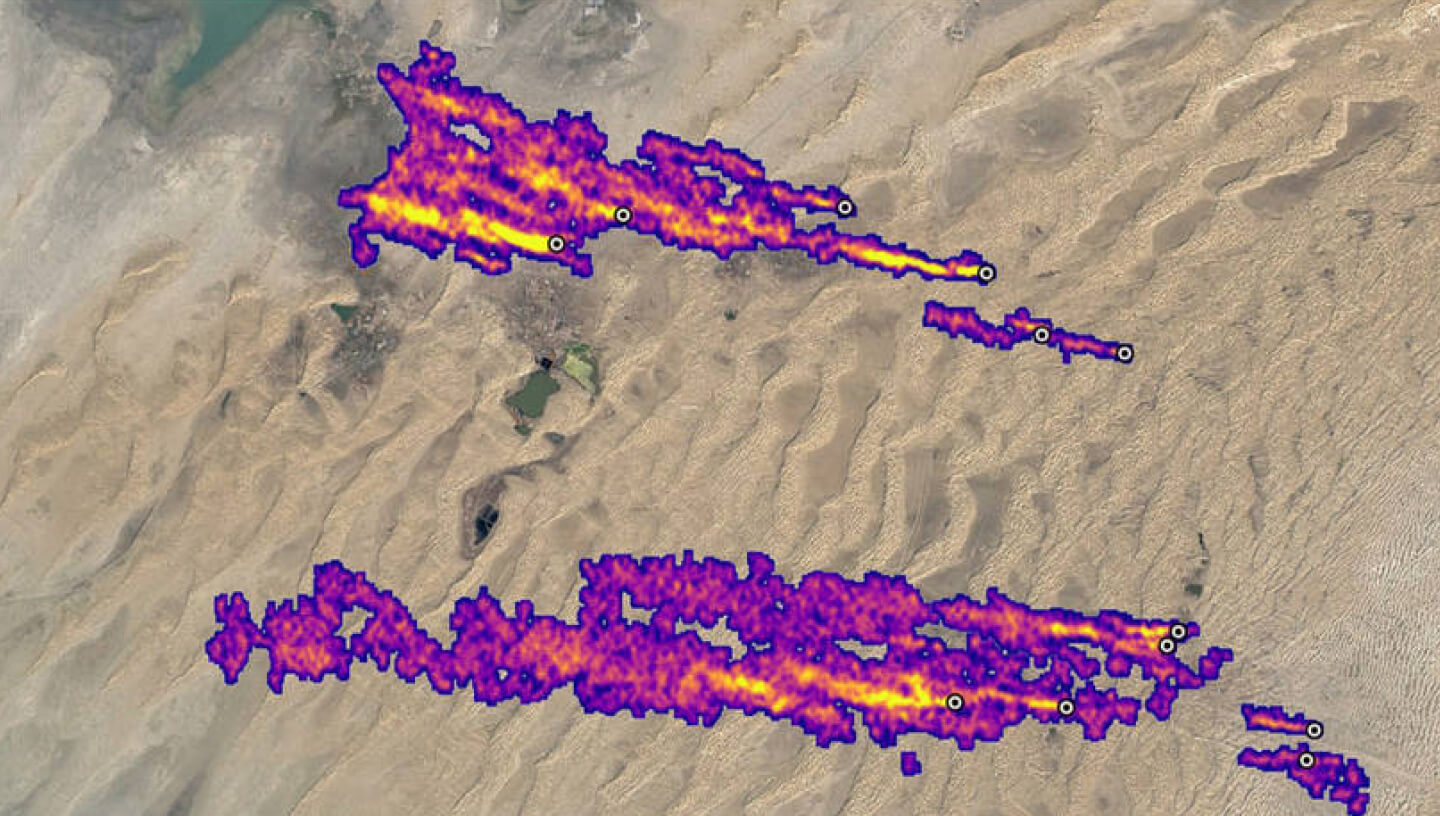02.11.2022
NASA scientists detect methane slicks over Turkmenistan, Iran and the US
 Photo by: NASA / JPL-Caltech
Photo by: NASA / JPL-Caltech
NASA’s Mineral Dust Inquiry Mission (EMIT), mapping the distribution of dust in the air and its impact on the climate, has discovered the ability to accurately calculate methane patches in the atmosphere.
Methane absorbs infrared light through a spectral imprint that the EMIT spectrometer can distinguish with high accuracy. Data collected by EMIT since July have identified more than 50 ‘super-emitters’ of methane in Central Asia, the Middle East and the southwest US. The scientists have dubbed the sources of the spots with the common word ‘super-emitters’ — these are facilities, equipment and other infrastructure, usually in the fossil fuel, waste or agricultural sectors, that emit methane in large quantities.
The largest methane spots are found east of the city of Hazar, Turkmenistan. Their source is oil and gas infrastructure. Twelve methane plumes can be seen here, pointing westwards. Some of them extend for more than 32 kilometres.
Another methane plume is seen south of Tehran, Iran — at least 4.8 kilometres long from a large waste treatment complex. Methane is a by-product of decomposition, so landfills may be the main source of its emissions.
A plume about 3.3 kilometres long was found southeast of Carlsbad, New Mexico, USA, in the Permian oil basin. The Permian field, one of the largest in the world, covers parts of southeastern New Mexico and western Texas.
“Some of the EMIT plumes detected are among the largest ever observed — unlike anything ever observed from space,” said Andrew Thorpe, a research technologist at JPL who is leading the EMIT methane spotting effort.
Methane is a potent greenhouse gas that is much more efficient at trapping heat in the atmosphere than carbon dioxide. Compared to carbon dioxide, methane makes up a relatively small part of human-caused greenhouse gas emissions, but is estimated to be 80 times more effective at trapping heat in the atmosphere for 20 years after emission. EMIT instruments have proven to be important tools for measuring this potent greenhouse gas.
“Limiting methane emissions is key to limiting global warming. The new development will not only help researchers better identify where methane leaks are coming from, but also provide insight into how they can be quickly eliminated,” said NASA Administrator Bill Nelson.
As part of its mission, EMIT will measure surface minerals in arid regions of Africa, Asia, North and South America and Australia. The data will help researchers better understand the role of airborne dust particles in heating and cooling the atmosphere and Earth’s surface, as well as identifying other methane patches.
Cover photo: NASA / JPL-Caltech


























Comments